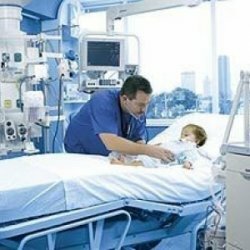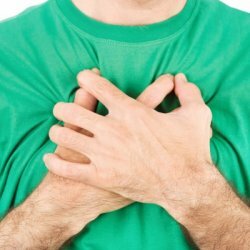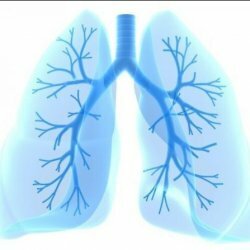Acute Respiratory Distress Syndrome (ARDS): What It Is, Symptoms
Content
- What is Acute Respiratory Distress Syndrome (ARDS)
- ARDS statistics
- Causes and risk factors for acute respiratory distress syndrome
- Progression and complications
- Signs and symptoms of acute respiratory distress syndrome (ARDS)
- Clinical examination
- How is ARDS diagnosed?
- How is acute respiratory distress syndrome treated?
- Prognosis of Acute Respiratory Distress Syndrome (ARDS)
- How can acute respiratory distress syndrome be prevented?
What is Acute Respiratory Distress Syndrome (ARDS)
Acute Respiratory Distress Syndrome (ARDS, Adult Respiratory Distress Syndrome (ARDS)) Is a life-threatening inflammatory lung disease.
The respiratory organs (lungs) provide the connection between air and blood. The lungs are made up of a series of folded membranes (alveoli) that are located at the ends of very thin branching air ducts (bronchioles).
The blood that enters the lungs from the pulmonary artery flows into smaller and smaller blood vessels until it enters the capillaries located in the walls of the alveoli. In this humid environment, oxygen diffuses (enters) from the alveoli into the bloodstream, while carbon dioxide exits the bloodstream into the alveoli and is expelled from the air ducts.

ARDS occurs due to various diseases and pathological conditions that provoke damage to the alveolar walls and the pulmonary capillaries surrounding them. There is a risk of pulmonary edema due to increased tightness of blood vessels, which can cause severe respiratory failure due to impaired gas exchange. ARDS is often accompanied by failure of other organs in the body, especially in the case of sepsis.
Alternative names for ARDS include adult respiratory distress syndrome, diffuse alveolar injury, and acute alveolar injury.
ARDS statistics
Adult respiratory distress syndrome is a relatively common disease worldwide, especially in very sick patients admitted to the intensive care unit (ICU). For every 100,000 people (over the age of 15-16 years old) annually account for about 30 cases, and among people aged 75-84 years old accounts for 306 cases for every 100,000 people.
About 1 in 9 patients admitted to intensive care units develop acute lung injury. These patients can have a variety of medical conditions, not just lung disease.
For ARDS associated with sepsis and most other causes, there is no difference in incidence between men and women.
Causes and risk factors for acute respiratory distress syndrome
Adult respiratory distress syndrome is a truly nonspecific response of the lungs and airways to a range of stimuli. They can directly affect the lungs or indirectly damage the lungs.
Approximately in 20% of patients there is no identified risk factor with ARDS. Risk factors include direct lung injury (most commonly aspiration of stomach contents), systemic disease, and trauma. The most common risk factor for ARDS is sepsis.
Given the number of studies in adults, the main risk factors associated with the development of ARDS include the following:
Read also:Sarcoidosis of the lungs, what is it: modern ideas about the causes, methods of diagnosis and treatment
Pulmonary diseases and conditions
- heavy pneumonia (pneumonia);
- aspiration (or aspiration of gastric contents into the airways);
- when he almost drowned (a);
- inhalation of toxins and other irritants such as smoke;
- lung damage and bruising;
- oxygen toxicity;
- fat embolism (when bubbles of fat pass through the bloodstream and block the airways).
Systemic conditions and diseases
- shock (including septic shock and shock due to trauma);
- sepsis: caused by bacteria spreading through the bloodstream;
- burns;
- pancreatitis;
- diabetic ketoacidosis (violation of carbohydrate metabolism in the blood due to the fact that the body breaks down ketones instead of sugar);
- hypersensitivity reactions;
- drug reactions to aspirin, heroin, or paraquat;
- multiple blood transfusions;
- malaria;
- acute liver failure;
- obstetric complications: problems during pregnancy or childbirth, such as preeclampsia;
- cardiac surgery and other complex operations.
Progression and complications
ARDS can be caused by acute lung injury or severe systemic disease. The lung is damaged and a cycle of acute inflammation begins. There is damage to the alveolar wall and capillary membrane, which increases leakage into the alveoli.

The alveolar "surfactant" (needed to keep the air spaces open) is lost or deteriorated, leading to decreased compliance and collapse of the lungs. The end result is acute pulmonary edema and multiple organ failure.
Other possible complications include pneumothorax (due to ventilation and reduced lung elasticity) and secondary pneumonia.
In most cases, adult respiratory distress syndrome will be rapid, lightning-fast progressing to account for different phases of edema, proliferation, and then fibrosis or scarring of the airways (lungs).
Signs and symptoms of acute respiratory distress syndrome (ARDS)
ARDS is a rapidly progressive and acute illness that is usually initially unexplained shortness of breath and rapid breathing. The patient may also notice that the lips and tongue turn blue (central cyanosis).
The doctor will take a short history to determine if you have any of the predisposing conditions and to find out what symptoms you may have. Sometimes people with ARDS are too sick to give a history, so the doctor makes a diagnosis based on eyewitness testimony and medical records.
Clinical examination
To diagnose ARDS, the doctor will look for a range of clinical signs that have an acute onset. The doctor will check your general appearance, listen carefully to your breasts, and check your oxygen saturation with a finger oxygen probe.
Read also:Aspergillosis
Some signs of ARDS that a doctor will look for include:
- cyanosis (bluish color localized on the tongue, lips);
- tachypnea (rapid breathing);
- tachycardia of the heart (increased heart rate);
- increased hypoxemia (low oxygen concentrations in the blood);
- peripheral vasodilation (opening of blood vessels in the periphery of your body);
- wheezing in your chest: Your doctor will listen to your chest with a stethoscope to hear wheezing, squeaky or crackling sounds that indicate your airspace is not working properly way.
How is ARDS diagnosed?
If you suspect you have ARDS, your doctor will do a number of different tests. Complete blood count, kidney function, liver function (liver function test, LFT), blood clotting test and blood culture - all this is necessary. These tests can help determine if you have a predisposing infection, what mistakes are likely to be made, and give your doctor an idea of how well your other organs are functioning.
Chest x-ray is an extremely important tool in the diagnosis and monitoring of disease progression. On examination, the doctor can visualize fluid buildup in the lungs.
You will also regularly measure the concentration of oxygen in the blood, and you can also take other more specialized examinations such as the insertion of special catheters (thin tubes) to measure a specific blood pressure. This eliminates other causes of fluid accumulation in the lungs, such as congestive heart failure.
How is acute respiratory distress syndrome treated?
ARDS is a serious and life-threatening condition that requires treatment in an intensive care unit with adequate respiratory and circulatory support. Treatment will focus on:
- Identifying and treating the root cause. If the suspected underlying cause is sepsis (pus-forming bacteria or their toxins in the blood and tissues), antibiotic therapy with broad-spectrum antibiotics should be initiated. Other conditions, such as trauma, will be treated appropriately.
- Prevention of treatment complications. Careful ventilation techniques should prevent the development of pneumonia and other lung injuries caused by this disease.
- Supportive care. Most patients require oxygen and ventilation to get enough oxygen into the lungs and keep the airways open. Circulatory support involves careful fluid management (reducing fluid intake to remove excess fluid from the lungs), blood transfusion and medication to help dilate blood vessels and improve pumping heat. All this helps the heart to maintain adequate performance. Nutritional support is essential for severely ill patients, and you may also need nutrition through a gastrostomy tube (insertion tube for feeding). Dialysis may be required when renal failure.
- Other methods of therapy. A number of other drugs have been tried to treat ARDS, including nitrous oxide (which dilates blood vessels in lungs), surfactant (fluid that keeps the airways open), and therapy steroids. But most of them failed to show good results in terms of the survival of sick patients. However, steroids can be used in the later stages of the disease to speed up recovery by reducing inflammation.
Read also:Symptoms and treatment of bronchitis in adults
Prognosis of Acute Respiratory Distress Syndrome (ARDS)
The overall prognosis for ARDS is poor, and many patients do not recover from therapy for the condition. Acute respiratory distress syndrome is a difficult condition to treat, as some therapies (such as high oxygen concentrations) can further aggravate the condition. From 50-75% ARDS patients die of the disease, although there is evidence that numbers are improving.
The prognosis for ARDS depends on your age, health status, and the underlying cause of ARDS. In general, if Acute Respiratory Distress Syndrome is caused by sepsis and is associated with multiple organ damage, there is little chance of survival.
How can acute respiratory distress syndrome be prevented?
Although many risk factors for ARDS are known, there are no successful preventive measures. Because aspiration pneumonitis (Mendelssohn's syndrome) is a risk factor for ARDS, taking appropriate measures to prevent aspiration (for example, raising the head of the bed and assessing swallowing mechanisms before feeding high-risk patients) may also prevent some cases ARDS.
In non-ARDS patients with mechanical ventilation, the use of large tidal volumes appears to be a risk factor for ARDS, and, therefore, using lower tidal volumes in all ventilated patients may prevent some ARDS.



